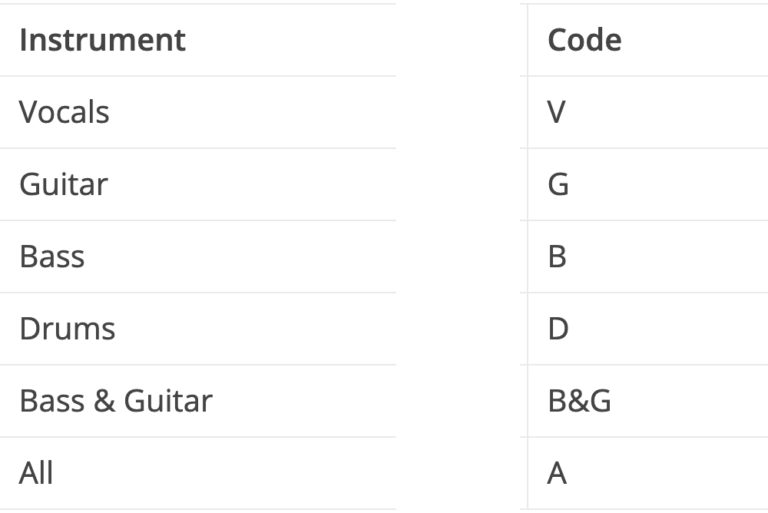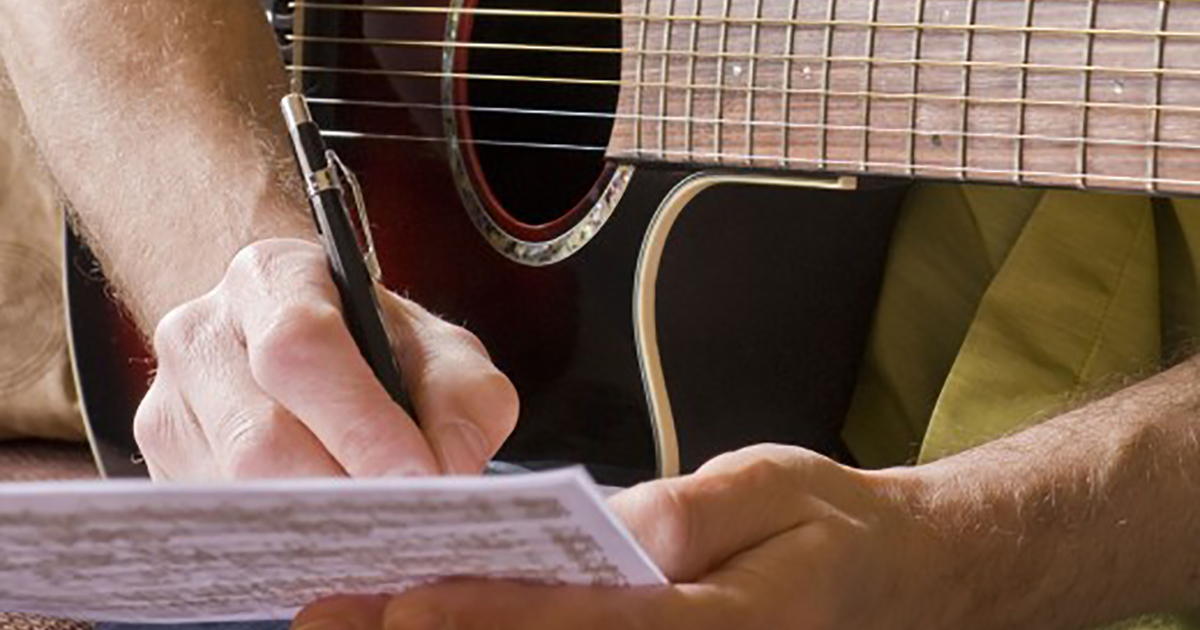I realized during the process that I’ve developed a pretty good routine over the years that gets the job done.
Below are some real-world suggestions that when implemented, will help you get a lot of songs down in a short amount of time well enough to play at rehearsal, or even for the first time at a gig!
1. Shut off the TV
This may seem obvious, but people will often leave the tube on for ambiance, even if they’re not interested in the program. Although you may not really be watching, it’s a major distraction.
Turn it off and you’ll immediately feel the difference.
2. Get to it!
The hardest part of completing any task for most people is simply getting started. We tend to look at the entire responsibility as a whole and procrastinate because it seems like a lot of work.
But if we break things down into manageable steps, it’s much easier to stay the course and complete the mission.
3. Make a list
Organization is essential in properly completing any task, and it’s best to make sure you have all of the songs you need to learn in one place. Again, this may seem obvious, but too often musicians will be hindered by scattering notes all over.
Type out the songs you need to learn in alphabetical order on one sheet and print it.
4. Make a playlist
Gone are the days of a band member handing you a CD or a cassette of the band’s songs. In most cases, you’re going to need to get them yourself. Whether you rip from your own collection, purchase though itunes, or utilize one of the several streaming services, you need to create a dedicated playlist exclusively for the songs you have to learn.
5. Listen to the songs
There’s a good chance that there will be songs you’ll have to learn that you’re already familiar with, but also some that you’ve never heard before. Since you now have your playlist set up, take the time to just listen to the songs without playing along or trying to learn them.
Just listen.
You’ll hear things you may have never heard before with older songs, and you’ll start to become acquainted with new ones. Getting arrangements, lyrics, beginnings and endings in your subconscious is a huge, important step in retaining each song down the road.
6. Prioritize
I generally like to start with the harder songs, but how you proceed is up to you. Regardless of your preferred approach, it’s key to have a game plan.
Grab a pen and place numbers next to the songs on your printed list in order of importance. This gives you the opportunity to tackle your list step-by-step.
7. Play along with the songs
Now that you have a solid game plan, it’s time to have some fun.
Run the playlist and play along with your instrument without thinking of it as work. Don’t worry at this point about learning all of the parts or playing everything right. Just play and enjoy yourself.
The more experienced you are, the easier it will be to pick up on riffs and chord progressions, and you might even get some down without having to go over them again.
The point here is to just let go and experience why you love playing in the first place.
8. Learn the songs one at a time
This is where your prioritizing comes in handy.
It’s helpful to think less about what you have to do and just do it. Start with the first song and keep playing it until you have it down without moving on to another song.
This will discipline you to get it right and will also provide an early sense of accomplishment.
9. Write down the keys
Drummers and singers get a pass here, but if you’re playing an instrument with notes, write down the key of the song next to the name on your list as you learn them.
Most you’ll be able to remember, but if there are a lot of songs on the list that you’re unfamiliar with, you’ll benefit from having a reminder of the key.
10. Check off your list
As you complete learning each song, be sure to place a check mark on your list or use a highlighter to have a visual indication that you know it. The whole point of making any to-do list is to knock off everything, so you’ll want to show to yourself that you’re making progress in writing.
It will reinforce your confidence and keep you motivated to press on.
11. Make notes
This is something you want to keep brief on your list. If there’s something that you need to remember about a song (specific breaks, time signature, etc.) jot down a short note next to the song. The very act of writing it down will actually help you to retain it.
In addition to writing down the keys next to each song, I like to write down a letter code for what instrument starts the song. The chart below shows my simple method.
 And so on — you get the idea.
And so on — you get the idea.
If you’re having difficulty learning and/or remembering certain songs just by listening to them, the following four tips are simple shortcuts to expedite the process:
12. Chart the songs
I’ve seen musicians use several different methods to chart a song, but the best option is to chart it in a way that you’ll easily understand.
I keep my charts very simple and always on one sheet of paper.
I file them all in small notebook with sheet protectors in alphabetical order so they’re quickly accessible. When you have hundreds of songs to remember for a gig, this is a must.
If you want to go digital, there is a fantastic app called MobileSheetsPro Music Reader that lets you easily create your own charts. It costs a few bucks, but it rocks!
13. Use isolated tracks
There are thousands of popular songs that have been remixed to feature one particular instrument, either completely isolated or bumped up heavily in the track.
Just Google or search on You Tube the song title along with the word “isolated” and your instrument, and chances are you’ll find multiple results.
14. Use video lessons/tutorials
I’ve found that I can always learn something from watching other players demonstrate how they play a particular song, even if the musician has less experience than me.
Sometimes I don’t hear parts exactly the way they’re played, so it helps to watch someone who knows how to play them right. It also serves as a verification for songs that I feel I’ve learned correctly.
Either way, I always get something of value by viewing tutorials.
15. Watch a live video of the original artist
The advantage here is that you get to actually see how the parts are supposed to be played, provided your instrument is featured enough.
You also get the added bonus of hearing how the artist chooses to perform it live, which is often somewhat modified from the studio version.
This can do nothing but help your approach to playing the song, as well as spark ideas for your own band’s performance.
16. Review
This is really something you’ll want to do through the whole process, and it’s also something that you’re never done with. It’s important to go back and just listen, just play along for fun, and keep your parts in-check.
I’ve found that no matter how many times I play a song, I never play it exactly the same way twice. For me, that’s part of the magic of music, and learning new songs keeps that spirit alive.



